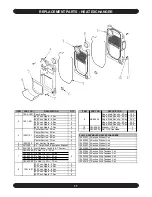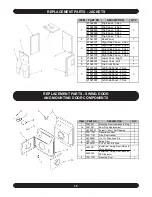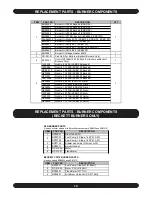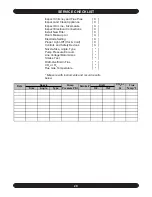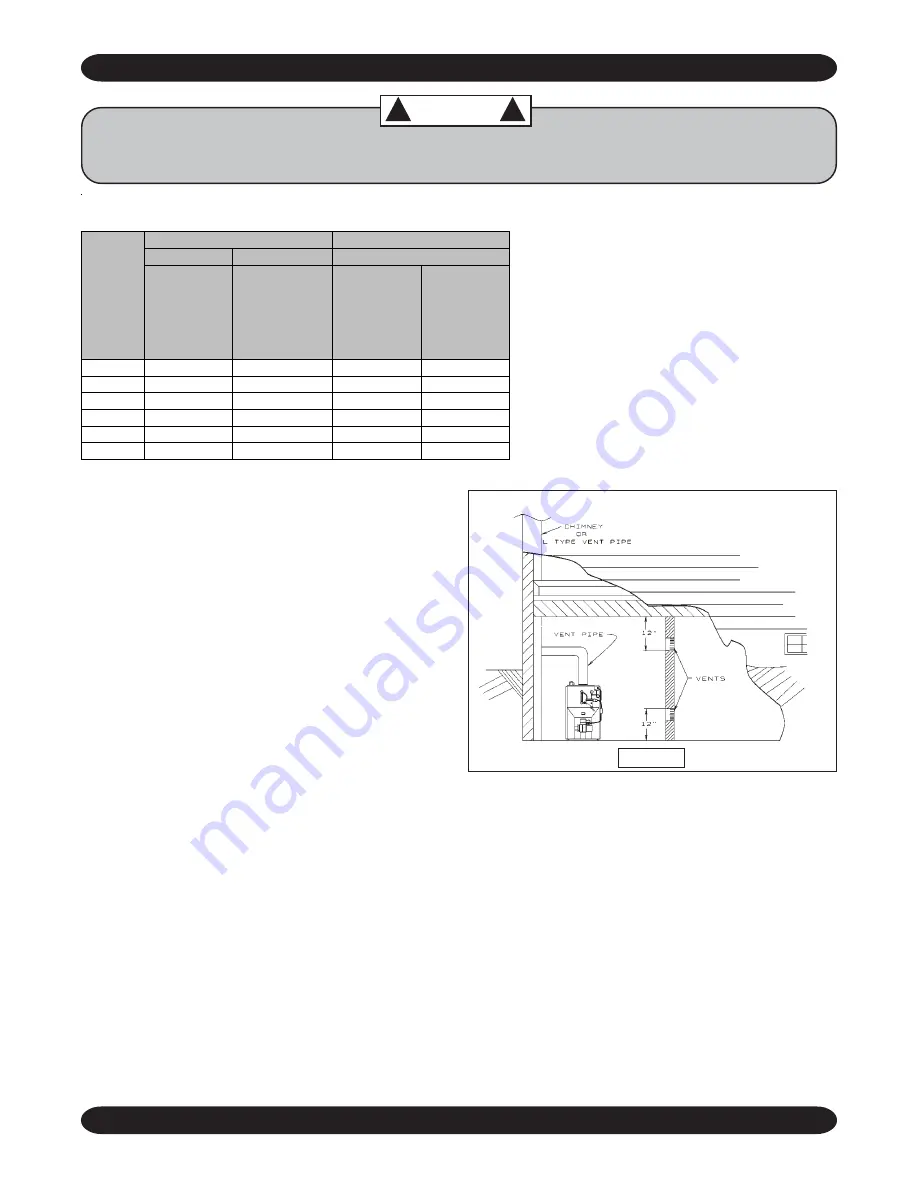
5
!
!
VENTILATION AND COMBUSTION AIR
WARNING
Air openings to combustion area must not be obstructed. By following the instructions below,
adequate combustion air can be maintained.
COMBUSTION AIR REQUIREMENTS
(Minimum Opening Requirement)
Outside
Inside
Combustion
Air 1 Sq.
In./5000
BTU/Hour
(Step 4)
Combustion Air
1 Sq. In./1000
BTU/Hour (Min.
100 Sq. In.)
(Fig. 1)
Vertical
Ducts 1 Sq.
In./4000
BTU/Hour
(Fig. 2 & 3)
Horizontal
Ducts 1 Sq.
In./2000
BTU/Hour
(Fig. 4)
91,000
19
100
23
46
140,000
28
140
35
70
175,000
35
175
44
88
210,000
42
210
53
106
245,000
49
245
61
122
280,000
56
280
61
140
* A space w hose volume is not less than 50 cubic feet per 1000 BTU/Hour of all
appliances installed in that space (cubic feet of space = height x w idth x length)
** A space w hose volume is less than 50 cubic feet per 1000 BTU/Hour of all
appliances installed in that space (cubic feet of space = height x w idth x length)
BTU/Hr
Input
Unconfined Area*
Confined Area**
Outside Combustion Air
1. Ventilation of boiler room must be adequate
enough to provide sufficient air to properly support
combustion and venting.
2. When the boiler is located in an unconfined space
in a building of conventional construction frame,
masonry or metal, infiltration normally is adequate to
provide air for combustion and ventilation. However,
in any building which has been altered to conserve
energy or to minimize infiltration, the boiler area
should be considered as a confined space. If there is
any doubt, install air supply provisions for combustion
and ventilation in accordance with section 5.3, Air for
Combustion and Ventilation, of the NFPA 54 1988
code, the recommendations that follow, or applicable
provisions of the local building codes.
3. When the boiler is installed in an unconfined
space, in a building of unusually tight construction,
air for combustion and room ventilation must be
obtained from outdoors or from spaces freely
communicating with the outdoors. A permanent
opening or openings having a total free area of not
less than 1 square inch per 5,000 BTU per hour of
total input rating of all appliances shall be provided.
Ducts may be used to convey make-up air from the
outdoors and shall have the same cross-sectional
area of the openings to which they are connected.
4. When air for combustion and room
ventilation is from inside buildings, the
confined space shall be provided with two
permanent openings, one starting 12 inches
from the top and one 12 inches from the
bottom of the enclosed space. Each opening
shall have a minimum free area of 1 square
inch per 1,000 BTU per hour of the total
input rating of all appliances in the enclosed
space, but must not be less than 100 square
inches. These openings must freely
communicate with the interior areas having
adequate infiltration from the outside.
(Figure 1)
5. When the boiler is installed in a confined space
and all air is provided from the outdoors, the confined
space shall be provided with two permanent openings,
one commencing within 12 inches from the top and
one commencing 12 inches from the bottom of the
enclosure. The openings shall communicate directly,
or by ducts, with the outdoors or spaces (crawl or
attic) that freely communicate with the outdoors.
One of the following methods must be used to
provide adequate air for ventilation and combustion.
A. When directly communicating with the outdoors,
each opening shall have a minimum free area of
1 square inch per 4,000 BTU per hour of total
input rating of all equipment in the enclosure.
(Figure 2)
FIGURE 1

















